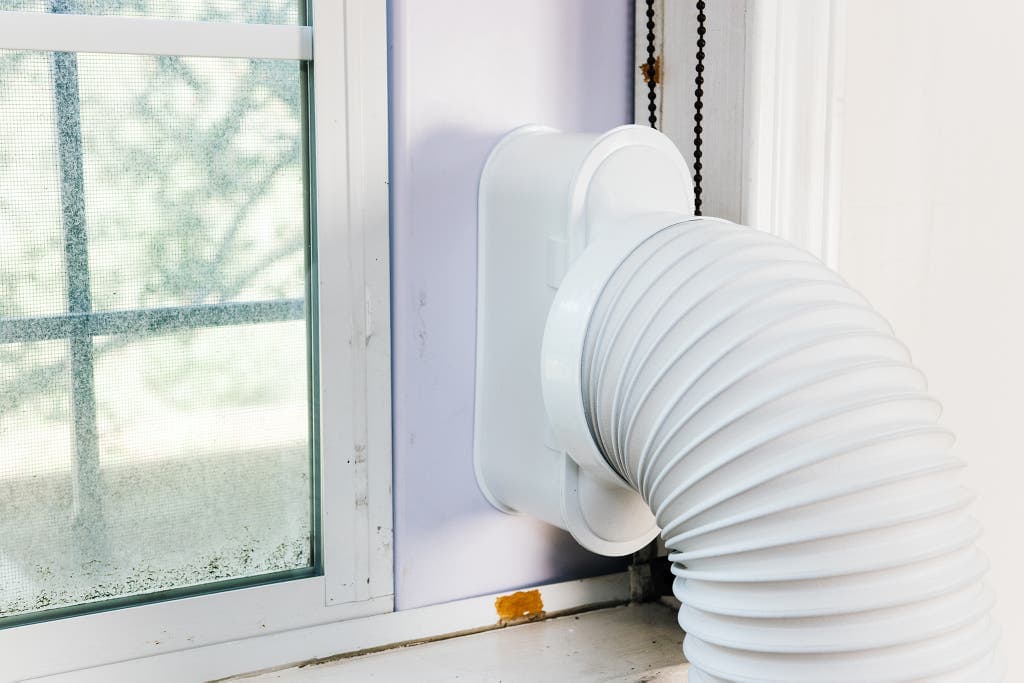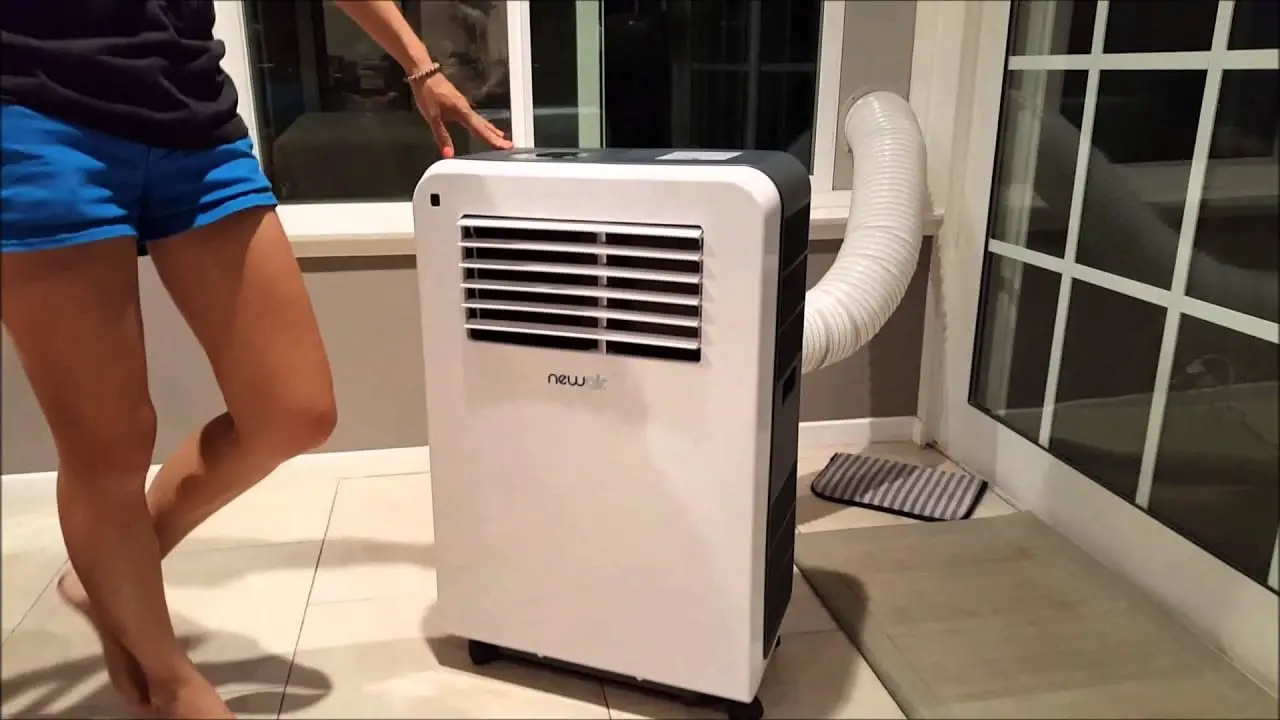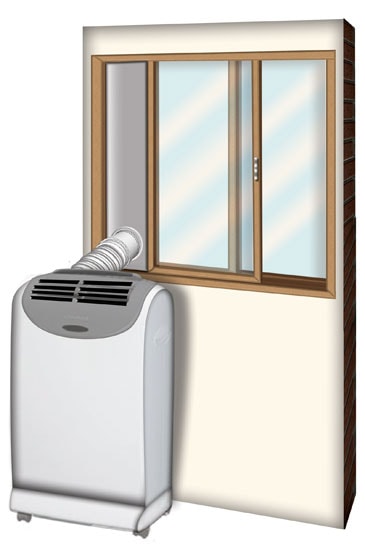The installation of portable air conditioners in a sliding window is easy and affordable to do.
With the suitable window kit and tools, you can complete the process in just a few minutes.
In this article, we’ll explore certain factors to consider before installing your window kit and the safety measures you have to take. We’ll also focus on the breakdown of what you’ll need in the process for a successful and tight installation.

Photo credit: NYTimes.com
Quick Questions Before Starting
Before installing your portable air conditioner, there are a few things you might have questions about and others that you need to keep in mind or be prepared for.
How Difficult Is This to Do?
Installing a portable air conditioner through a sliding door is easy as most AC units have window kits. You don’t need to be an expert to do it or have any experience at all, and reading through the instructions will give you a clear view of what to do.
How Long Does it Take?
The installation process takes a few minutes. Most window kit designs are easy to assemble and install in just a short period.
How Much Do Materials Cost?
Excluding the AC unit, the range of the items you’ll need to install the air conditioner will be around $40 to $65.
Materials Needed to Install a Portable AC in a Horizontal Sliding Window
The materials needed to install an air conditioner are essential items that you might have in your house. If not, it’s better to be prepared or have an idea of what you’ll need.
Kit - $30 to $40
Deciding on the appropriate window kit is knowing the window dimensions where you’ll be installing it and the length of the hose it comes with. Your exhaust hose should cover the distance from where the air conditioner is to the window. Window kits differ on window size, and you want to make sure that your window kit doesn’t leave gaps after installation and that your exhaust hose size will be the exact fit for your portable air conditioner.



Photo credit: newair.com
Screws - $9.99
To secure and lock the window kit into place, you’ll need screws. If you don’t ensure the window kit is in place, it’ll lead to it falling off and tampering with the exhaust hose’s placement.
Screwdriver - $0.99
A screwdriver will be for tightening the screws.
Measuring Tape - $7.99
You can use a measuring tape to confirm the window's dimension and the distance from the electric outlet to the air conditioner unit and from the air conditioner unit to the window.
Duct Tape - $5.99
Duct tape comes in handy when there are gaps that need to be closed after installation. You could also secure your fillers with duct tape. There must be no exchange of air from the outside to the inside and vice versa.
How to Install a Portable AC in a Horizontal Sliding Window
Sliding window portable air conditioners usually have their kits for easy installation. If your air conditioner doesn’t come with a kit, you can get one that’ll fit the exhaust hose hole and be the right fit for your window size.
You can install your AC within a few minutes with the instructions provided. Here are a few steps to take when installing your portable air conditioner in a horizontal sliding window:
1. Collect All Needed Items
First, you need to collect all the items you’ll need, such as the window kit, the AC unit, and duct tape, if it’s required. Items such as scissors and drills depend on what your installation kit has and doesn’t have or your window setup.
You can also go through the kit to ensure that you have a window plate, screws, duct connectors, and an exhaust hose.
2. Set Up the Location
The location of your portable air conditioner should allow enough space for air to circulate. There should also be a balanced distance between the window and the electric outlet.
You can also consider factors like the height of your window. You don’t want it to be too high for the exhaust hose to pass through. Will the space where the air conditioner is set up not be needed?
3. Set Up Window Panels
Slide the window panels that are part of the kit and attach their strips to each end.
Place them into the window opening and adjust to the right fit and then close the window. With the screws that are part of the window kit or that you have bought, secure the window.
4. Secure Your Exhaust House



Photo credit: Youtube.com
Get your exhaust hose and expand it from both ends.
Attach one to the rear of the air conditioner unit and then rotate it three full clockwise turns to ensure that it’s firmly attached and won’t get loose.
Secure the nozzle into the other exhaust hose’s end by turning clockwise. Insert the nozzle into the window panel.
In some cases, the window is too big and needs filler to close any gaps allowing air exchange. You could use plywood or plexiglass to fill in gaps or use any filler material you can get from hardware stores.
To prevent any leaks, you can secure your board or filler with duct tape. Usually, window kits have insulation materials that are weatherproof stripping to close any gaps.
It would be best if you place your exhaust hose in such a way that it’s not too short and doesn’t bend and fold. If your hose isn’t straight, the heat won’t circulate freely and the hose will cook itself up. Looking at these details is vital if you want your portable air conditioner to last longer and be effective.
5. Final Touch-Ups
Plug in your air conditioner and see if it works. Read through the instructions one more time to ensure that you didn’t miss anything.
For a detailed visual, check out the one below.
Tips and Safety Considerations When Installing a Portable AC Into a Horizontal Sliding Window
Installation Instructions
Often excitement and impatience get a hold of us that we barely glance at the installation instructions. Before installing your portable air conditioner, there are still factors you have to consider that you might not have thought of before.
You can confirm your window's dimensions, the electric outlet power the air conditioner needs, and if you have all the tools to install the unit properly. For homeowners with pets and children, safety is easily at risk as, most of the time, they can quickly shift the air conditioner if not mounted into place and have it fall on them.
Not using the recommended electric outlet power also creates the risk of sparking fires in the future.



Photo credit: Nytimes.com
Avoid Carrying Heavy Portable AC
Some portable window air conditioners might be possible to carry while others need more than one person. Trying to install and carry a heavy portable AC unit might lead to muscle strains, backaches, and even injuries if ever it slips from your hands.
Getting help to install your portable air conditioner is the safest way not to injure yourself in any way. If that’s not possible, you might consider getting your air conditioner installed professionally.
Household Security
Air conditioners vented through the window become a point of interest for robbers. They might want to grab the air conditioner and leave, or they might want to gain entry to your house.
If poorly installed, it's easy to tamper with the window kit and have it fall off from the frame. It would be best if you lodged your portable air conditioner window kit in such a way that it takes time for a robber to remove it, so by the time they could remove it, you’d already have called for help or taken some other action.
Another way to secure your air conditioner is to install an air conditioner window alarm that senses any movement outside and close to the window. There are plenty more alternatives you could use.
Why a Portable AC Has to Be Vented
In the process of cooling down your space, air conditioners suck in warm air, humidify it, release cold air, and eject the hot air out of the exhaust hose.
If you don’t vent out your air conditioner through another room or outside, the ejected hot air will circulate in the same area you’re trying to cool down.
The circulation of hot air will cause the temperature not to drop as expected, and the air conditioner unit will be in a loop of processing warm air and ejecting warm air in the same area.
Your AC unit won’t be effective, and the unending cycle will lead to increased electricity bills.
Not venting out your air conditioner means you aren’t using it to its full capabilities, and using it ineffectively might wear it out.



Conclusion
Installing a portable air conditioner in a sliding window is relatively easy and affordable and can be done in just a few minutes. All you need is a suitable window kit and tools.
There are a few things to consider before installing your portable air conditioner to ensure that you don’t run into any problems in the future and that having your portable air conditioner is worth it. Taking safety measures is also vital in protecting yourself and those around you, as stated in the article.
Feel free to watch the linked videos to understand better and install your portable AC just the right way.
People Also Ask
Here are answers to a few questions you might have.
How to Cut a Window Kit for a Portable Air Conditioner?
As most window kits have a specific design to fit the traditional sliding window applications, if your window's opening is smaller than expected, you can trim the panels to fit. You can cut the farthest panel side from your hose.
Can I Use a Portable Air Conditioner in a Room Without a Window?
Yes. You can vent your portable air conditioner in different ways depending on what is most suitable for you. If you don’t have a window, you can vent your air conditioner through a wall, through a sliding door, or by drop ceiling venting.
Do You Need to Remove the Window Screen for a Portable Air Conditioner?
Usually, you don’t need to remove the window screen for your portable air conditioner to work correctly. As the hose vents through the window, the window screen shouldn’t affect it.
Other Related Content
Here is some other content that might interest you. :
